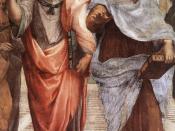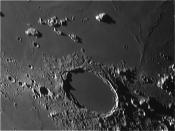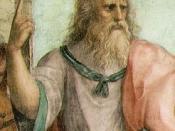Samantha Fremd
Plato's Theory of Forms
The Theory of Forms, also known as the Theory of Ideas, is perhaps the most well known aspect of Plato's philosophy. I am not terribly well versed on the writings of Plato, but I know just enough to get by. For example, I know that there are all kinds of breeds of dogs in the world, each of varying size and have drastically different sounding barks - but the concept of dog will always remain constant and that when I think of the idea of dog, the tangible item that comes to mind is never a cat. I also know that Plato was good about covering his proverbial butt by shrouding many of his writings in contradiction and half suppositions. One could argue that he never really committed to any of his ideas - I would contend that he was more an advocated of open discussion of ideas rather than the commitment of any one given idea as truth.
It was such open mindedness that kept him away from that dangerous spiral of silence that so many slip down for fear of being ridiculed. . . But, then again, what do I know? I learned much more about Plato's Theory of Forms while on my quest for knowledge so now I am enlightened.
Plato expounded his Theory of Forms over a writing career of some forty years. The theories were being refined over this period and were never fully explained in any one dialogue. A form is an abstract property or quality. Take any property of an object, separate it from that object and consider it by itself, and you are pondering a form. For example, if you separate the bark of a dog and consider its bark all by itself, you are thinking...


